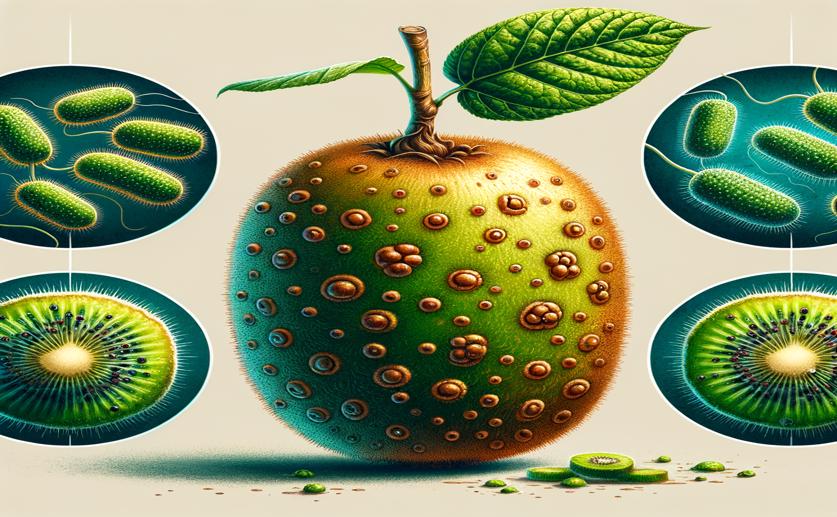
Understanding How Three Kiwifruit Bacterial Strains Cause Disease
Jenn Hoskins
14th May, 2024

Image Source: Natural Science News, 2024
Key Findings
- In China, one kiwifruit pathogen strain (QSY6) is more harmful than others
- QSY6 has unique genes linked to its ability to infect and damage kiwifruit plants
- Understanding these genes helps develop strategies to protect kiwifruits from disease
References
Main Study
1) Comparative genomic analyses provide insight into the pathogenicity of three Pseudomonas syringae pv. actinidiae strains from Anhui Province, China.
Published 11th May, 2024
https://doi.org/10.1186/s12864-024-10384-1
Related Studies
2) Adapting the inoculation methods of kiwifruit canker disease to identify efficient biocontrol bacteria from branch microbiome.
3) Genome analysis of the kiwifruit canker pathogen Pseudomonas syringae pv. actinidiae biovar 5.
4) Genome analysis of Pseudomonas syringae pv. actinidiae biovar 6, which produces the phytotoxins, phaseolotoxin and coronatine.
5) Practical benefits of knowing the enemy: modern molecular tools for diagnosing the etiology of bacterial diseases and understanding the taxonomy and diversity of plant-pathogenic bacteria.



 7th May, 2024 | Jenn Hoskins
7th May, 2024 | Jenn Hoskins